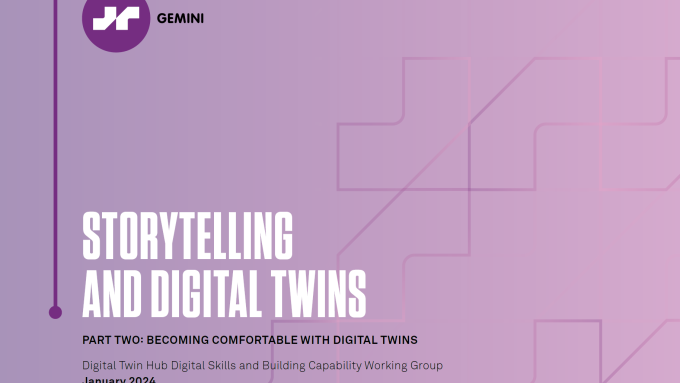Download File

- File Information
- Size: 0.8MB
- Type: pdf
How Finance and Digital Twins Can Shape a Better Future for the Planet
by Alexandra Bolton, Executive Director, Centre for Digital Built Britain; Mark Coates, International Director of Public Policy and Advocacy, Bentley Systems; Peter El Hajj, National Digital Twin Programme Lead, Centre for Digital Built Britain
The finance industry has long been at the forefront of using data and technology to make better decisions, to de-risk and improve return on investments, and to create better outcomes. Tackling the big challenges of our day—such as climate change, energy, and healthcare—relies on having the right technologies and data to make the right interventions.
One of the most significant technology developments of the past decade, digital twins—a digital replica of a physical asset or world—is the key in building infrastructure that supports future generations.
The Centre for Digital Built Britain (CDBB) has seen first-hand how digital twins can improve decision-making in the planning, design, build, and operation of assets, as well as the benefits of connecting the technology across organisations and sectors.
Based on the Gemini Principles, the CDBB spearheaded the development of the U.K.’s national digital twin project, building an ecosystem of connected digital twins that can securely share infrastructure information in real-time to support better outcomes.
If this goal seems one step too far into science fiction, then we can take inspiration from Singapore, which recently became the first country to create a country-wide digital twin. The technology will help create more sustainable, resilient, and smart development; help in the rollout of renewable energy; and protect against climate change and rising sea levels.
Cross River Rail in Brisbane, Australia, is another example of a publicly sponsored mega-project that can provide the catalyst for a city-level digital twin. Featuring multi-environment digital twins that constantly talk to one another, the AUD 5.4 billion (GBP 3 billion) project aims to introduce the benefits of a federated model approach to digital engineering.
The issues in Singapore and Brisbane that are being solved through digital twins are similar to those that are affecting, or soon will affect, the U.K. However, there are other use cases for the technology. The Grenfell Tower tragedy, for example, has ushered in a renewed focus from government and regulators on the safety of higher risk buildings, while national and international banks are having to demonstrate the impact of their investments against economic, social, and environmental (ESG) targets.
As key investors, the finance community has an opportunity to realise the benefits of digital twins by using them to add value, track sustainability targets, attract new investments, and manage risk better.
Having spoken with a wide range of investors, the conclusion is that there is huge untapped potential for investors to influence how data is used to improve infrastructure decision-making. Also, by taking on a greater role in the digital transformation of infrastructure, investors can be involved in providing better outcomes for businesses, people, and nature.
There is also a significant opportunity to leverage digital twins to support key challenges facing the investment community: where to allocate capital; screening and managing risk; enhancing asset value by improving performance and reliability; and complying with environmental, social, and governance (ESG) requirements.
The key to unlocking this potential is to apply the fundamentals of the information value chain.
By collaborating with the wider industry to develop practical use cases, the finance community can help use the insights derived from data to solve their most pressing problems.
The infrastructure sector needs to play its part and approach this dialogue with openness and flexibility. Infrastructure professionals need to understand that investors generate their return on investment (ROI) in a variety of ways, via different types of assets and at different stages of the infrastructure lifecycle. Some of their use cases overlap with those already developed for supply chain businesses or operators while others will not.
We first need to improve the quality of the dialogue between investors and other parts of the infrastructure sector, re-imagine the information value chain from an investor’s perspective, explore how investors can expand their leadership role, and share some use cases investors are currently pursuing.
From an infrastructure industry perspective, there are three important steps to achieve this goal:
- Understand the variety of infrastructure investors and what that means for the different ways that they can benefit from digital twins
- Understand how investors categorise infrastructure
- Relate digital twin use cases to different investor strategies
Collaboration across the infrastructure industry and investors is key to building smarter, more sustainable infrastructure. When we collaborate, across boundaries and across borders, we can do amazing things. We can make better business decisions that drive better economic, social, and environmental outcomes.
There is already progress being made, with digital twin spending set to reach USD 27.6 billion by 2040, according to an article published by Twinview. It will be exciting to see how the finance community will join with the wider infrastructure community and solution providers to use higher quality data and digital twins to improve investment returns, meet ESG goals, and create the sustainable future we all want to see.


